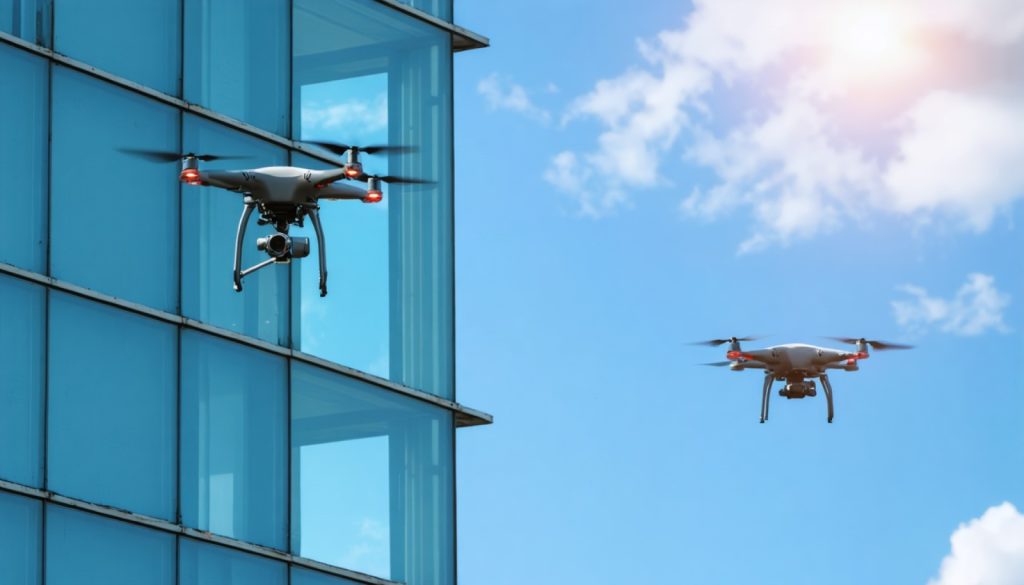
- Hammer Missions, a UK-based AI company, is transforming infrastructure inspection with autonomous drone technologies.
- The company received £1.4 million in funding to expand into the North American market and enhance its technology.
- Autonomous drones conduct detailed inspections, capturing structural data with minimal human intervention and generating 3D reports.
- Since 2019, Hammer Missions has completed over 20,000 drone flights for 5,000+ projects, highlighting the demand for their innovative solutions.
- The technology aims to democratize maintenance and safety by being accessible and cost-effective, regardless of architectural complexity.
- Backed by ACF Investors and industry pioneers, Hammer Missions is set for significant growth and innovation in observational AI.
- The North American expansion represents a new chapter for addressing diverse building challenges with precision.
In a world where the skyline constantly evolves and structures pierce the heavens, the task of inspecting these formidable edifices demands innovation. Enter Hammer Missions, a forward-thinking AI company headquartered in the UK, ambitiously redefining how we inspect the built environment. The company recently secured a robust £1.4 million in funding, a financial surge fueling its strategic leap into the North American market and further fine-tuning its groundbreaking technology.
The core of Hammer Missions’ ingenuity lies in its ability to orchestrate the meticulous inspection of structures through autonomous drone flights, generating highly detailed 3D reports with a mere flicker of human intervention. Imagine drones, like mechanical bees, weaving in and out of architectural giants, capturing every crack and crevice, every thermal anomaly. The technology they wield is not only revolutionary but also accessible, promising to democratize infrastructure maintenance and safety.
Since its inception in 2019, Hammer Missions has already left an indelible mark, conducting over 20,000 drone flights across a spectrum of more than 5,000 projects. This exponential growth mirrors the pressing demand for streamlined, cost-effective, and precise inspection methodologies.
Simplicity, a guiding principle of Hammer Missions’ technology, ensures that industry professionals can garner crucial structural data irrespective of the building’s complexity. Varun Sarwal, the driving force behind Hammer Missions, underscores the company’s ethos: a commitment to advancing not just technology, but the potential of what observational AI can achieve across industries.
Backed by ACF Investors and notable angels, including pioneers from GeoSLAM and Atkins, Hammer Missions now stands at a pivotal crossroads. The embrace of North America as a market is not merely a geographic expansion; it symbolizes a new chapter where their impeccable technology can meet and conquer diverse building challenges.
In this era of innovation, where economies demand precision and efficiency, Hammer Missions offers a beacon for stakeholders in architecture, engineering, and urban planning. The message is clear: embrace technology, and the world of structures will unfold its secrets, one drone flight at a time.
The Rise of AI-Driven Drone Inspections: How Hammer Missions is Changing the Game
Understanding the Technology Behind Hammer Missions
Hammer Missions is at the forefront of revolutionizing the inspection of large structures through its cutting-edge AI and autonomous drone technologies. By utilizing these technologies effectively, the company enables the creation of comprehensive and intricate 3D reports with minimal human input.
How Does It Work?
1. Autonomous Drone Flights: The core technology involves drones that autonomously navigate complex structures, mapping every detail from cracks to thermal anomalies.
2. Data Processing and Analysis: Once the data is collected, AI algorithms process the information to generate detailed reports, which are crucial for identifying structural issues early.
3. Ease of Use: The platform is designed with simplicity in mind, allowing industry professionals with varying technical expertise to harness this powerful technology.
Why the Shift to North America?
The expansion into the North American market marks a significant milestone for Hammer Missions. This market is ripe with opportunities due to its vast infrastructure and pressing need for efficient inspection solutions. Furthermore, the availability of the latest technology infrastructure and a tech-savvy audience makes North America an attractive destination for Hammer Missions.
Market Forecasts & Industry Trends
– Increased Urban Development: With cities expanding both vertically and horizontally, the demand for regular and precise building inspections continues to rise.
– Growth of AI in Construction: According to industry forecasts, the usage of AI-driven solutions in construction, including drone inspections, is set to grow exponentially over the next decade.
– Sustainability and Safety: Incorporating advanced technologies ensures not only the safety of structures but also promotes sustainability by reducing the need for traditional, more resource-intensive inspection methods.
Real-World Use Cases
– Skyscrapers and High-Rises: Drones can safely inspect regions that are otherwise dangerous or costly to assess using traditional methods like scaffolding or manual inspections.
– Bridges and Tunnels: With the ability to capture detailed structural conditions without interrupting traffic flows, drones offer a compelling solution for transport infrastructure inspections.
– Energy and Utility Structures: Particularly in inspecting power lines, wind turbines, and solar farms where speed and precision are crucial.
Pros & Cons Overview
Pros
– Efficiency: Reduces time and cost significantly compared to manual inspections.
– Safety: Limits the need for human inspectors in hazardous environments.
– Accuracy: Offers high precision in data collection and analysis.
Cons
– Regulatory Hurdles: Navigating airspace regulations can be complex.
– Technical Limitations: Weather conditions may affect drone flights.
– Initial Costs: Although cost-effective long-term, initial investment can be substantial.
Actionable Recommendations
– Embrace Innovation: Companies should consider integrating drone inspections into their regular maintenance schedules to reduce long-term costs.
– Training: Investing in training staff to utilize drone technology can maximize the benefits of these inspections.
– Stay Informed: Keep abreast of regulatory changes in airspace laws to remain compliant.
Conclusion
Hammer Missions is sending a clear message: the future of structural inspections is here, and it’s autonomous and AI-driven. By incorporating these technologies, companies can not only improve efficiency and safety but also gain insights that were previously unattainable.
For more on AI in construction, explore TechCrunch.



